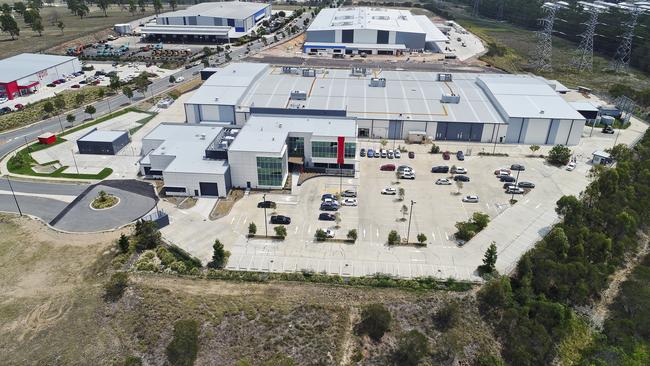Support and supply networks key to a dynamic aerospace sector
Strategy is important but having enough backup, including a skilled workforce, can ensure Australia has the effective sovereign aerospace capability it needs.

There’s an important point that can’t be ignored during the current national security discussion about Australia’s ongoing Defence and critical capabilities.
The Defence Strategic Review has sparked much of this discussion, including a conversation about the changing strategic considerations within our local region.
This has naturally evolved into some deep thinking about the best way to set investment priorities across the Defence forces, including for air and space capabilities.
Aerospace capabilities are a vital part of Australia’s joint Defence posture and structure, including through investment in advanced military aerospace systems and equipment.
However, there is perhaps an even more important investment to consider – the ongoing development of effective capabilities for support, maintenance and supply.
It is these supporting capabilities, including the skilled workforce, that will deliver the vibrant, national aerospace ecosystem, to ensure Australia has the effective sovereign aerospace capability it needs.

Importantly, growing this ecosystem for national security and Defence requires congruent support for a strong commercial aerospace industry, building on the high levels of commonality between the componentry, systems and workforce skills between military and commercial aerospace.
The continued integration of military and commercial support and supply chains will provide new opportunities to create additional economies of scale and grow sovereign aerospace capability.
There are significant advantages in up-scaling infrastructure and workforces so they can support both commercial and military systems, which is why Queensland continues to invest, and encourage private investment, into growing our industries locally.
Aviation and aerospace are among Queensland’s most important industries and continue to be significant to our economy.
In Queensland, we have a long history in aviation. Just over 100 years ago, two biplanes in the state’s Outback formed the first air fleet of Qantas.
From those humble beginnings, we’ve never looked back. Queensland now leads the nation in supporting the development of a hi-tech aerospace ecosystem.
We’ve achieved so much.
The outback town of Cloncurry was the destination of the first Qantas passenger flight in 1922. Now Cloncurry is home to Australia’s first commercial drone flight testing facility. The majority of Australia’s aircraft engine overhaul businesses are located in Queensland.
That includes maintenance repair and overhaul (MRO) operations of companies such as Qantas, Alliance Airlines, SkyTech, Jet Aviation, Helimods and GE Aviation. TAE Aerospace’s MRO facility in Ipswich, west of Brisbane, is the only such capability in the Asia-Pacific to service the F135 engines used on the F-35 fighter aircraft.
We have significant aviation technical training capacity through companies such as Aviation Australia with its national reach and innovative engagement with schools and industry to prepare the future workforce for defence and civilian aerospace.
In the field of space technology, all of the Australian companies currently developing rockets or vehicles for space launch are established in Queensland, companies such as Black Sky Aerospace, Gilmour Space Technologies, and Hypersonix Launch Systems.
Queensland has been literally building its aerospace industry from the ground up.
There are growing locally-based capabilities in research, technology, flight testing and payload launch. Government and private sector investments in biofuels, including sustainable aviation fuel (SAF), demonstrate how the local industry is leading Australia’s response to global needs for aerospace innovation.
Queensland is now a home to many of the world’s top-10 aerospace companies and one-quarter of Australia’s aerospace companies. Leading defence companies Airbus, Boeing, Northrop Grumman and Raytheon are among those who have a Queensland presence, along with other world and national leaders.
Queensland’s aerospace ground services, such as MRO, design, assembly and manufacture, provide a solid foundation for further growth of the national aerospace ecosystem.
Importantly, the industry’s long-term strategies are supported by the recently updated Queensland Aerospace 10-Year Roadmap and Action Plan. This roadmap sets the vision that, by 2028, Queensland will be a leading centre within Australasia and Southeast Asia for defence and civil aerospace innovation.
It’s clear aerospace is already a strong national industry with a skills-base ready for further expansion. Queensland will continue to be at the forefront.
However, we need to ensure that in the current discussion on Defence capabilities, our support and supply chain partners receive a clear signal. They need to know they are critical to the industry lifting even higher.
It’s one way we can ensure Queensland, and Australia, continues to have an aerospace ecosystem that’s healthy, up-to-date and ready to act when called upon.
Air Vice-Marshal Neil Hart (retired) is Queensland Strategic Defence Adviser for Aerospace.




